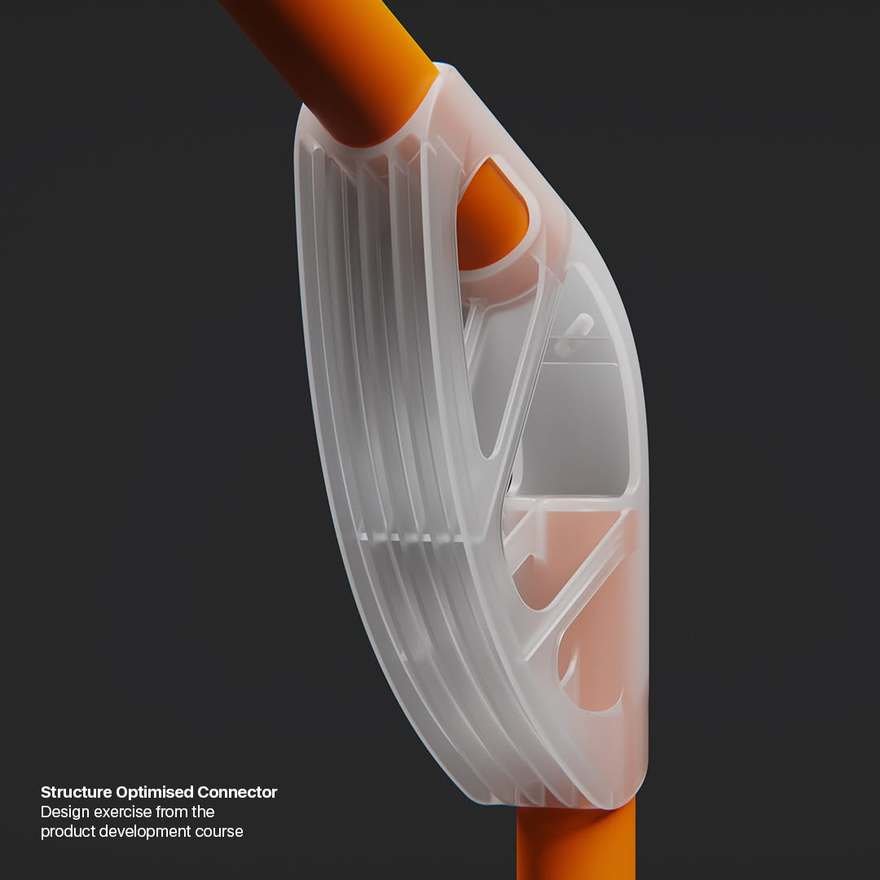Practical Industrial Design Student Work: Designing Connectors
We've seen so many blue-sky ID school assignments that this one, which focuses on practicality, is refreshing. It's from the "Basic Knowledge of Product Development" class at Germany's Magdeburg-Stendal University of Applied Sciences, run by professor Mathias Bertram.
"The task was to design a connector between two predefined profiles with a volume not exceeding 75ccm. This connector was then 3D-printed using FDM and tested for load resistance with a specially defined fixture. The goal was to develop a component under given constraints that could withstand as much weight as possible before breaking. To achieve this, topology optimization analyses were applied, and the 3D printing process was fine-tuned for maximum load capacity.
Here's what three different students came up with:
Daniel Glatthaar






Vincent Ackermann


Adrian Wiepcke
"Although the connector was designed for FDM printing, it could also be manufactured using metal casting. Renderings illustrate how the component would look as a precisely cast part: Noise textures mimic the characteristic surface produced by sand casting, while brushed textures represent polished outer surfaces. Realistic imperfections like stains and nicks further enhance the authentic look of both shaders."




This being Germany, where function is every bit as important as looks, the students were required to load-test their creations to prove out their designs.

-
o5Favorite This
-
Q2Comment
K
{Welcome
Create a Core77 Account
Already have an account? Sign In
By creating a Core77 account you confirm that you accept the Terms of Use
K
Reset Password
Please enter your email and we will send an email to reset your password.


Comments
Who won?
Love this! The approach of First-principles Design generates benefits beyond the product. Well done.